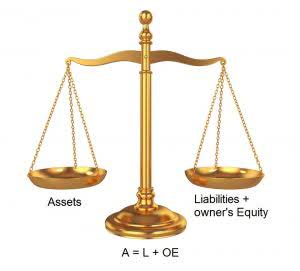Financial Markets: Definitions, Types and Functions
When the market for CDOs began to heat up, the housing bubble that had been building for several years finally burst. As housing prices fell, subprime borrowers began to default on loans that were worth more than their homes, accelerating the decline in prices. Each one focuses on the types and classes of instruments available on it. Commercial Mortgages are issued to finance the purchase of a real estate for business purposes. Farm Mortgages are used to finance the purchase of agricultural real estate. Mortgages are long-term loans to individuals or businesses to purchase a home, land, or other real property where such property acts as collateral for the loan.
They need to borrow internationally with the aid of Foreign exchange markets. The combination of loose credit requirements and cheap money spurred a housing boom, which drove speculation, pushing up housing prices and creating a real estate bubble. As a company establishes itself over time and grows, it needs access to additional capital. It will often find itself in need of much larger amounts of capital than it can get from ongoing operations, traditional bank loans, or venture and angel funding.
Examples of Financial Markets
Secondary market is the market where the second hand securities are sold (security Commodity Markets). During the 1980s and 1990s, a major growth sector in financial markets was the trade in so called derivatives. Options markets, such as the Chicago Board Options Exchange (Cboe), similarly list and regulate options contracts. Both futures and options exchanges may list contracts on various asset 10 best new stocks to buy now classes, such as equities, fixed-income securities, commodities, and so on. Stocks may be traded on listed exchanges, such as the New York Stock Exchange (NYSE), Nasdaq, or the over-the-counter (OTC) market. Most stock trading is done via regulated exchanges, which plays an important economic role because it is another way for money to flow through the economy.
They are intermediaries which direct money from savers or lenders to sellers or borrowers. Supply and demand—and expectations for future supply and demand—have always been and remain the basic price-setting principles. High supply often leads to lower prices, while tight supply usually means higher prices. If, for instance, floods ruin millions of acres of corn, prices tend to rise amid short supplies. If it’s a perfect year for the corn crop and more bushels end up in grain elevators than the market needs for processing, the price is likely to fall. This type of trading is commonly used for smaller, less liquid companies that may not meet the stringent listing requirements of the stock exchanges.
Explore Markets
Today’s stock markets are not just platforms for raising capital but have been tied into millions of Americans’ retirement and investment strategies. This is why, at perilous times—2007 to 2008 and the pandemic being two major examples—the U.S. government and Federal Reserve felt far more obligated than in previous eras to step in. This was not just to protect the wealth of a select few but because the savings of a vast swath of Americans were at risk. High stock prices can indicate a company’s success—or at least the feeling of buyers that they are doing well—but they can also result from stock splits, dividends, and share repurchases. When a stock price drops, this doesn’t mean that money is lost from the market as a whole.
Market Participants In the primary market, Commercial banks and other Financial Institutions that deal in credit are the main originators of mortgages, while Households and Corporations are the main customers. Some of the most common participants in the bonds market include the Government and its Agencies which issue bonds as a source of long-term funding for its long-term projects. Bonds are long-term debt obligations issued by corporations and government units. They represent a debt owed by the issuer to the investor, which obligates the issuer to pay a specified amount at a given date, basically with periodic interest payments. Funds accumulated from the pensions of the formally employed have resulted in huge cash inflows from pensions.
Financial Markets
The crisis resulted from a sequence of events, each with its own trigger—these events culminated in the banking system’s near-collapse. The IPO also offers early investors in the company an opportunity to cash out part of their stake, often reaping very handsome rewards in the process. Initially, the underwriters usually set the IPO price through their pre-marketing process. Thousands of cryptocurrency tokens are available and traded globally across a patchwork of independent online crypto exchanges.
Functions of Financial Markets
Buying and selling instruments in the capital markets mostly require the advice of professionals to make the right decisions. The complex nature of capital market securities is the reason for this. For one to transact in capital markets, there is a stipulation that they have to carry out their investments through registered brokers.
Once a company goes public, its stocks can be traded freely on the stock market. This is the secondary market for stocks, and most trading is done through stock exchanges. This part of the larger stock market dates to at least 1602 in Amsterdam, evolving since into some of the world’s most complex institutions. A company can raise money by selling shares to investors and its existing shares can be bought or sold.
Stock markets, or equities markets, are used by companies to raise capital and by investors to search for returns. Traders, for their part, take a more short-term approach to the stock market. They aim to capitalize on the market’s volatility, trading stocks, options, futures, and other financial instruments within shorter time frames—from seconds and minutes to days and months. Traders often rely on technical analysis, which involves studying market trends, charts, and other statistical measures to predict future price movements. While trading can offer the potential for quick profits, it also comes with higher risks than long-term investing. Quickly buying and selling securities requires a sharp understanding of the market and a more active, hands-on strategy for trading.
Besides his extensive derivative trading expertise, Adam is an expert in economics and behavioral finance. Adam received his master’s in economics from The New School for Social Research and his Ph.D. from the University of Wisconsin-Madison in sociology. He is a CFA charterholder as well as holding FINRA Series 7, 55 & 63 licenses. He currently researches and teaches economic sociology and the social studies of Top gene sequencing stocks for 2021 finance at the Hebrew University in Jerusalem.
OTC Derivatives and the 2008 Financial Crisis: MBS and CDOs
Firms can raise the amount of capital they need by selling shares of itself to the public through an initial public offering (IPO). This changes the company’s status from a “private” firm whose shares are held by a few shareholders to a publicly traded company whose shares will be subsequently held by public investors. Any subsequent trading of stocks occurs in the secondary market, where investors buy and sell securities they already own.
In 2007, hedge funds increased in popularity due to their supposed higher returns for high-end investors. Since hedge funds invest heavily in futures, some argued they decreased the volatility of the stock market and, therefore, the U.S. economy. The hedge fund investments in subprime mortgages and other derivatives caused the 2008 global financial crisis. Outside of financial markets, there are other auction markets, such as those for art, wine, livestock, foreclosed homes, or a number of other assets sold at a central location, either a physical space or online. Nowadays, a high percentage of futures market activity is in financial products such as stock indexes, Treasury securities, and foreign exchange.
- They are licensed organizations that buy and sell stocks and other securities for individual and institutional clients.
- Secondary market is the market where the second hand securities are sold (security Commodity Markets).
- Not every investor makes decisions based on the same criteria, and what might not seem rational to one investor, will seem perfectly acceptable to another.
- Besides his extensive derivative trading expertise, Adam is an expert in economics and behavioral finance.
There is a close, positive relationship between financial market development and economic growth. The futures market removes some of the volatility in the U.S. economy. It allows businesses to control the future costs of the critical commodities they use every day. So, when they work well, financial markets can make the country much better off. Financial markets provide finance for companies so they can hire, invest and grow.
They are licensed organizations that buy and sell stocks and other securities for individual and institutional clients. Brokerage firms can be small boutique shops or multinationals offering investment advice, research, and wealth management services while executing trades for customers. Full-service brokers provide detailed financial advice, portfolio management, and personalized services, making them Warren buffett penny stock better for investors who prefer a thorough approach to managing their investments. Further down in cost, discount brokers provide a more hands-off experience and are typically preferred by investors who make their own trading decisions. The NYSE and Nasdaq are prime examples, serving as central locations for the buying and selling of stocks.





